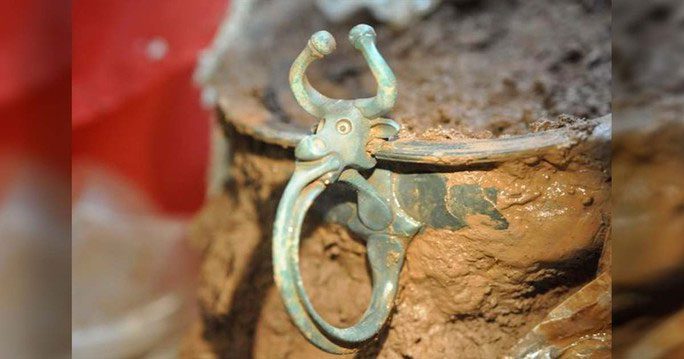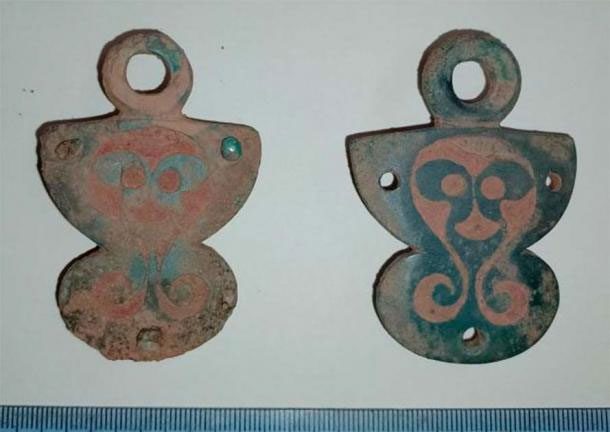A series of archaeological discoveries have followed a fortunate find by a metal detector enthusiast in 2019, who uncovered a treasure on a field in Wales, England.
According to Ancient Origins, the lucky man, Jon Mathews, discovered the treasure in March 2019. It consisted of a ceramic pot and several other small artifacts.
Despite the seemingly modest nature of the treasure, Mathews decided to contact scientists due to a strong intuition that it must be something of great importance, as reported by Wales Online.

One of the exquisite items excavated from the Welsh treasure – (Photo: Amguedfa Cymru)
With meticulous precision, local scientists carefully excavated eight different artifacts and transported them to the National Museum of Wales Amguedfa Cymru.
Subsequent analysis revealed many intricate details of the treasure and identified it as Roman artifacts dating back up to 2,000 years, making it extremely valuable.
Archaeologists returned to the special field and discovered an additional eight pots, an intricately decorated Iron Age bucket made of bronze alloy, along with many other finely crafted items in a similar style.
Many of these items, particularly the pots, have been identified as grave goods buried alongside a significant individual in the latter half of the 1st century AD, a tumultuous period during which Roman rule in Britain was being challenged.
The most notable item is a bowl adorned with a large-eyed head design, featuring a beautifully curved blue metal horn, with a lower jaw that expands into a loop resembling a handle.

They could very well be luxurious grave goods of an ancient noble – (Photo: Amguedfa Cymru).
The coins were found in two different areas of the field, and the entire excavation site is located near the ancient Roman town of Caerwent, leading scientists to develop greater suspicions.
They believe it is highly likely that there was an entire settlement, an unknown town that once thrived in this special field, all thanks to the initial fortunate discovery by the metal detectorist.
Given its age, intricacy, and historical significance, this treasure alone can be considered a unique gem. Scientists will continue to explore the area to verify suspicions regarding the ancient settlement.





















































